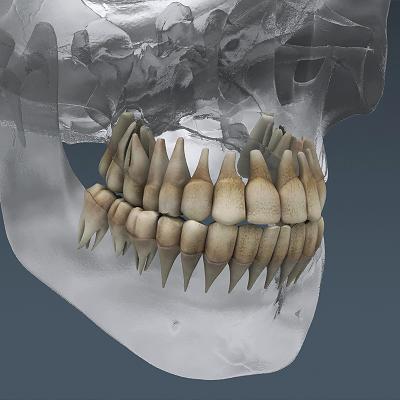I have been a certified CPR/AED Trainer for 8 years. I started my own training company in 2009 with my husband. My professional life revolves around training everyone from Doctors and Nurses to Moms and Dads how to perform CPR and react in an emergency. For the last 3 years, we have trained over 1,200 students annually. Ask me anything and everything about CPR, Saving Lives and training manikins.
Good Question--
First, I'm happy to hear that your restaurant has an AED. Getting an AED on someone within the first 2 minutes of a Cardiac Arrest is critical to their survival.
Here is the good news: AEDs are very easy to use. All you have to do is Turn It On and it will talk you through everything else. Every AED will give verbal instructions to lead you through a rescue, step-by-step. And the best part is that if you do something incorrectly (i.e. put the pads in the wrong place), the AED will tell you.
While I always recommend that people take a CPR class to learn how to do CPR and use an AED, remember that as long as you turn it on, the AED will guide you through the rest of the steps.
If you are using an AED (Automated External Defibrillator) and performing CPR, and the victim regains conciousness--Stop doing CPR. Leave the AED in place and turned on. Stay with the victim and be ready to restart CPR again if the vicitm loses conciousness again and stops breathing.
It is very important that you leave the AED in place and turned on. No, it will not shock the concious person. The victim's heart is weak and it may go back into Cardiac Arrest. If this happens, you want the AED on and ready to go-just in case.
It seems like everytime you turn on the TV someone is telling you that CPR is different, and it is hard to know who to believe. CPR has always been an evoloving process. I have an old Blue Jacket Manual (US Navy Manual), that belonged to my grandfather in the 1940's-in it, they show CPR as putting the victim on their stomach and moving the arms up and down over the head like a bird flying. My how things have changed!!
Most CPR Guidelines decisions are made on what is called the ECC (Emergency Cardiovascular Care)/AHA Committee. This is based on research and experimental implementation in NIH, Eurpoe and in a few hospitals/ambulance crews across the USA. It takes years to amass enough data to adequatly support changing CPR.
You still breathe in CPR-take a look at some more detailed basics below:
1) There is still breathing in CPR. The concept of Hands-Only CPR was developed by the AHA to encourage more people to act in an emergency. It was found that bystanders panicked and were afraid to act because they thought CPR was too complicated. Hands-Only CPR is meant to be used on adults that you see collapse. It is not effective for children, infants, drowning/accident victims. Conventional CPR is still seen as best, but by getting bystanders to atleast do something (i.e. PUSH), surivial rates have begun to creep up. See this link for more information: http://www.heart.org/HEARTORG/CPRAndECC/HandsOnlyCPR/LearnMore/Learn-More_UCM_440810_FAQ.jsp
2) The American Heart Association (AHA), the gold-standard for CPR training in the USA, has committed to revising it's guildelines every 5 years. This means that in 2015-another change is coming. They use research from the USA and from around the world to see what techniques are providing the best outcome.
3) There are different types of CPR classes. Some classes provide a certification, some classes are meant for Healthcare Providers (EMTs, Nurses, MDs), others are meant simply to bring awareness (Friends & Family CPR). Each type of class is taught a different way with a different goal in mind. So, when you see someone on the TV demonstrating CPR, it is usually the most basic technique that can fit into a 30 second spot.
4) Not all CPR Guidelines carry the same weight. For instance, in my area (East Coast/South), a hospital will not accept any CPR card not issued by an AHA instructor. So, Red Cross, ECSI, American EHS-all of these classes-while they teach a type of CPR, it is not recognized. This is why I call the AHA the Gold-Standard. Other CPR training guidelines take pieces form the AHA and sprinkle in their own interpretation. They may even say "AHA compliant" or "AHA Guidelines" this is not the same and the AHA has issued a statement saying that they do not condone the use of their guidelines by any other agency.
I hope this long answer has helped to answer your question. CPR is constantly evoloving and changing. I hope you can take a class soon to learn more.
Hi Ellen 91:
Yes, you can perform CPR on animals. Some states even require that vetrinarians have CPR training for animals.
Some EMS systems even carry dog and cat sized CPR masks for use on animals with an oxygen tank when responding to a fire.
I can understand that your friend was scared-it is traumatic to witness a family member (an yes, dogs are family), needing such strong help.
Like CPR on a human, CPR on a mammal (dog/cat) is not a 100% guarantee of survival, but it can help.
Oral and Maxillofacial Surgeon
 Do you ever operate on guys who get their jaws busted in a fight?
Do you ever operate on guys who get their jaws busted in a fight?
Private Detective
Investment Banker
 What's a 100-hour work week like?
What's a 100-hour work week like?
Hi Stern,
Thanks for sending me a question!
First, I never recommend doing anything you see on TV. Rescue maneuvers shown on screen are edited to dramatic effect and the safety of the actor(s). For example, in the choking scene in Mrs. Doubtfire, you see Robin Williams lifting Peirce Brosnon up so high that they fall backwards. What you don't see a true Heimlich maneuver where the rescuer is forceably thrusting into the victim's stomach. It is dramatic to see an actor fall over, it is painful to actually punch him in the gut.
The Heimlich, or Abdominal Thrust, is very effective at relieving choking in people over the age of 1. Standing behind the victim, you simply place your fist just above the choking person's navel, wrap your other hand around to grasp your fist and give quick, forceful thrusts with an in/up motion.
A bigger issue is Good Samaratin Law protection which would protect you from losing a lawsuit if you did perform the Heimlich on someone. Most states require that you have had formal training before you are given Good Samaratin protection. This means that if you do something you saw on TV-albiet successfully-you are opening yourself up to being liable for injury. Unless you have, at some point in your life taken a CPR course and learned the skills.
Ultimatly, it is your decision if you feel you need to become formally trained. I would suggest it, if only for the peace of mind.
Hi Jordy,
While breaking ribs is a very common side-effect of proper CPR (around a 95% break-rate in adults who recieve CPR), it is not the goal of CPR. In other words, make sure you are pushing very hard (atleast 2" down on anyone over the age of 8) and in the center of the chest. You may hear/feel a snap or grinding-it is ok.
It is better to break some ribs than allow someone to stay dead.
Hi JerBear,
This is actually a very common question. And no, your technique will not change dependent upon the victims' sex.
CPR is done on bare-skin. This means that if the cardiac arrest victim is a female, the bra needs to be removed. When the bra is removed and the female is on her back, to put it delicatly, breast will move East-West, not North-South. Any 'obstruction,' no matter the size, weight or density, real or after-market, will move to the side and you will have a clear space to put your hands to push.
Remember too that the proper CPR hands are not laying flat along the chest-instead your inter-laced fingers pull your top hand up-forming a 'V." This 'V' means that you are not touching anything squishy. :)
-OR-
 Login with Facebook
Login with Facebook (max 20 characters - letters, numbers, and underscores only. Note that your username is private, and you have the option to choose an alias when asking questions or hosting a Q&A.)
(A valid e-mail address is required. Your e-mail will not be shared with anyone.)
(min 5 characters)
By checking this box, you acknowledge that you have read and agree to Jobstr.com’s Terms and Privacy Policy.
-OR-
 Register with Facebook
Register with Facebook(Don't worry: you'll be able to choose an alias when asking questions or hosting a Q&A.)